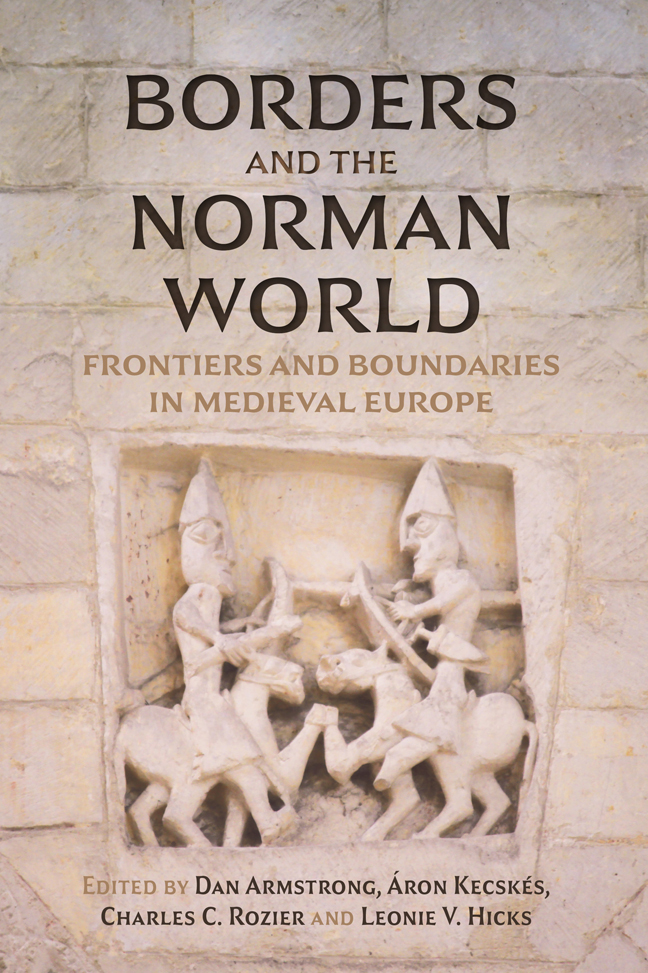Book contents
- Frontmatter
- Contents
- List of Illustrations
- List of Contributors
- Acknowledgements
- List of Abbreviations
- Naming Conventions
- Maps
- Introduction: Writing the Borders of the Norman World
- Part I Borders in and Around the Norman World
- Part II Ecclesiastical Borders
- Part III Conceptual Boundaries
- Afterword: Borders, Landscapes, and Seascapes
- Select Bibliography
- Index
Afterword: Borders, Landscapes, and Seascapes
Published online by Cambridge University Press: 22 February 2024
- Frontmatter
- Contents
- List of Illustrations
- List of Contributors
- Acknowledgements
- List of Abbreviations
- Naming Conventions
- Maps
- Introduction: Writing the Borders of the Norman World
- Part I Borders in and Around the Norman World
- Part II Ecclesiastical Borders
- Part III Conceptual Boundaries
- Afterword: Borders, Landscapes, and Seascapes
- Select Bibliography
- Index
Summary
In Their Introduction To this volume, Dan Armstrong and Aron Kecskes quoted a passage from James Crawford's The Edge of the Plain: ‘And what is a border if not a story? … It can only ever be made. It can only ever be told.’ This description is fitting for a collection of essays examining the concepts of borders, boundaries, and frontiers through a series of case studies relating to the Norman World. An ever-present, though implicit, factor is the landscapes and seascapes of that world that allow those stories to be told. It is appropriate therefore to begin this afterword with one of the strangest of those stories, the poem Moriuht.
Warner of Rouen wrote the poem in the 1020s and dedicated it to Archbishop Robert of Rouen and Countess Gunnor. It has mainly been studied for what it can tell us about literary patronage and culture in Rouen, artistic and scholastic rivalries as well as slavery in the central Middle Ages. What is of concern here is not the extremely vitriolic nature of the poem, of which much has been said, but what it tells us about border zones and how they might be networked across a geography spanning the areas considered by this volume and their connection to Rouen. The titular main character, a poet regarded as being of little talent by Warner, and his family were enslaved. Bought by Viking raiders who raped and humiliated him, Moriuht travelled across the Irish Sea where he was sold at the market in Corbridge in the Tyne valley. He ended up as slave to the Corbridge community of nuns, a number of whom he had sex with in order to generate an army of sons who would conquer Italy. The locals took exception to his behaviour and he was beaten up by the residents of the town, fled in a boat and was captured once again by Vikings who this time sold him in Saxony. On attaining freedom Moriuht travelled to Rouen to ask for Countess Gunnor's aid in locating his wife, Glycerium, and child and she was able to reunite the family.
The landscapes and seascapes encountered by Moriuht are not described in detail in the poem.
- Type
- Chapter
- Information
- Borders and the Norman WorldFrontiers and Boundaries in Medieval Europe, pp. 359 - 366Publisher: Boydell & BrewerPrint publication year: 2023



